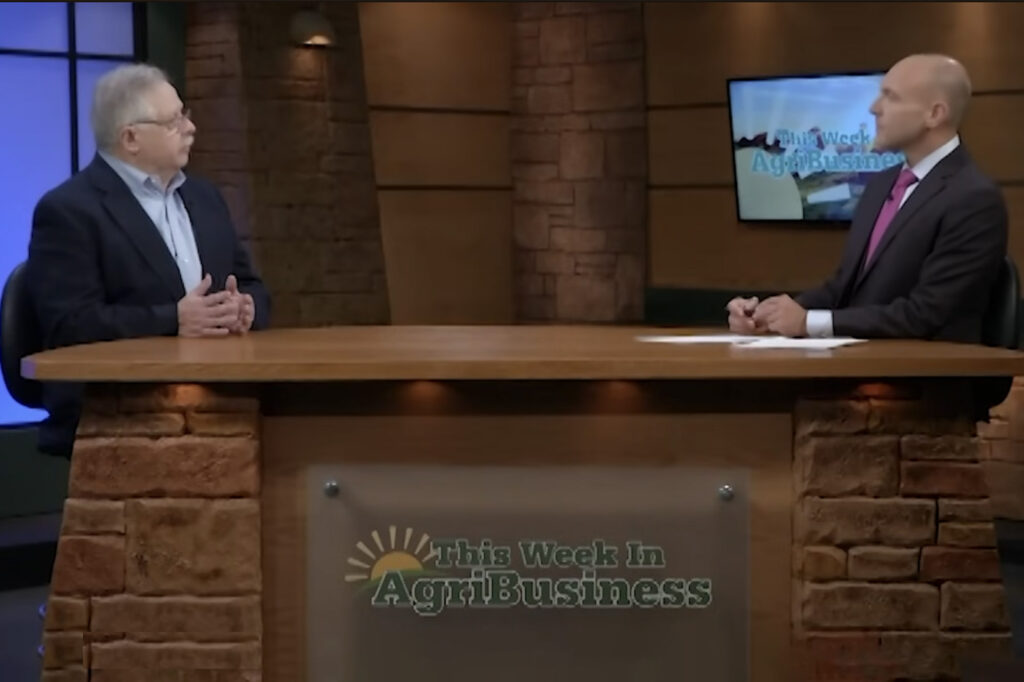Don Close, executive head emeritus of Terrain, sat down with Mike Pearson to answer questions on all things cattle markets on the September 28 episode of This Week in Agribusiness. Here are some highlights from the interview.
Prices and Consumer Demand
Are cattle prices going higher or lower in the near term?
I think this market still has room to the top side. The summer market, early fall: has it tested us? Yes. Is it broken? No. And as cattle supplies tighten, demand’s still holding up incredibly well. So, the combination of the two — I still think over 2025, 2026 — I still think there's room to the top side.
The all-beef fresh price continues to push into record territory. When is the consumer going to back off?
We keep looking for that trigger signal, and today we're not seeing it. In fact, when we look at real per capita expenditures by class of beef, beef demand has held up incredibly well through this whole cycle.
Pricewise, are we seeing beef move unacceptably high compared to other commodities out there in the grocery store for consumers?
No, it's not. Now, we're seeing a little bit of adjustments. Obviously, we're not seeing the push for high-end middle meats that we were seeing, say a year ago. But when you take that whole beef package and you compare it to the other proteins, beef demand is holding up incredibly well. Specifically, ground beef demand has been amazing.


Carcass Weights and Production
Are we at record carcass weights right now in the cattle cycle?
For where we’re at seasonally, we are at a record level. Seasonally those weights should continue to increase into mid- to late November. At the trajectory we're on, we could see that thing peak in that 918- to 920-lb. level. So, clearly, a record when the year's over.
Given the increased weight carcasses coming through the processing facility, what's that doing for total beef production?
Beef cow slaughter year to date is running roughly 16% behind a year ago. Total cow slaughter is down 15%. But even with that reduction, total beef production is only down about 1%. So, the increased carcass weights are offsetting the decline we've seen in federally inspected slaughter.
Herd Rebuilding Prospects
When is this herd going to start to get rebuilt? With the cow slaughter coming down, is that an indication that maybe producers are retaining these cows?
For 2024, no. Because the percentage of heifers in the feed yard mix is still so high. Heifers on feed were at 38.5% in July (and 39.6% as of October 1). From what we're seeing, and watching sale barn receipts, we don't think that there's any measurable retention of heifers taking place as of yet. The lack of heifers going back to the herd, it’s completely offsetting that decline in cow slaughter. So, still no. For 2024, we're looking for another net decline in cattle inventory.
Thirty-nine percent of the calves on feed right now are heifers — an indication that producers are moving the calves into the beef supply, not keeping them on the farm. What would you expect that percentage to drop to when we do start retaining heifers as an industry?
The neutral zone in that ratio is between 36% and 37% — it’s just kind of, we're not expanding, we're not contracting. So, we have to pull that heifer percentage below 36%. And if you go back to where we were in 2014/2015, you could see that percentage drop to as low as 32% to 33% when we really start aggressively retaining females.
Could we still have more room to run before the heifer retention starts?
I think drought conditions, pasture and range conditions, are still a big challenge. I think the interest rate impact is having some impact. I think the average age of cow owners is having an impact. So, I think it will ultimately happen, but I don't think we're necessarily to that point yet.
Terrain content is an exclusive offering of AgCountry Farm Credit Services,
American AgCredit, Farm Credit Services of America and Frontier Farm Credit.